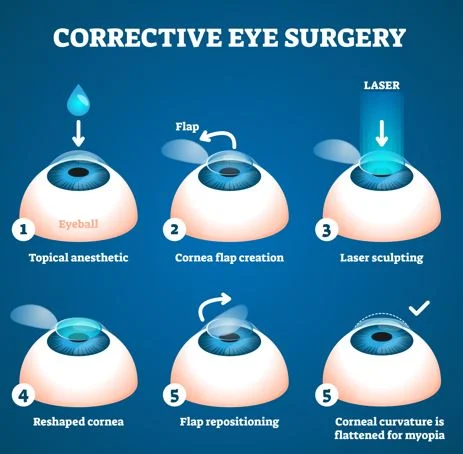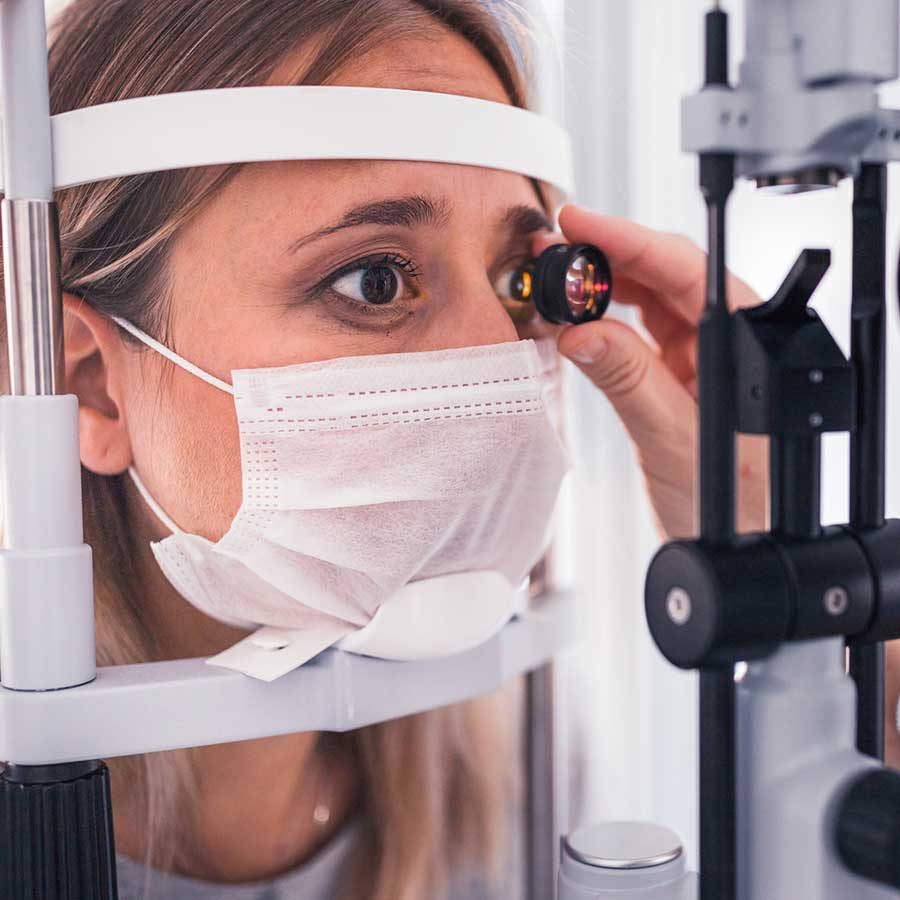LASIK (Laser-Assisted in Situ Keratomileusis) surgery is primarily used to correct common vision problems, including:
1. Nearsightedness (Myopia):LASIK can effectively treat nearsightedness, where distant objects appear blurry while close-up objects are seen more clearly. During LASIK, corneal tissue is removed to flatten the cornea, which changes how light focuses on the retina, improving distance vision.
2. Farsightedness (Hyperopia): LASIK can also correct farsightedness, a condition where close-up objects are blurry while distant objects may be seen more clearly. In LASIK for hyperopia, the cornea is reshaped to steepen it, allowing light to focus correctly on the retina.
3. Astigmatism: LASIK is an effective treatment for astigmatism, which occurs when the cornea is irregularly shaped, causing distorted or blurry vision. During LASIK, the laser can reshape the cornea to a more regular shape, addressing astigmatism and improving overall vision.
4. Presbyopia (Age-Related Vision Changes):While LASIK can correct distance vision problems, it may not directly address presbyopia, an age-related vision issue that makes it challenging to focus on close-up objects. However, LASIK can be combined with other procedures like monovision LASIK or multifocal lens implants to address presbyopia in some cases.
It’s important to note that the success of LASIK and the extent of vision correction achievable can vary depending on individual factors, including the severity of the vision problem and the health of the eye.
Before undergoing LASIK, a comprehensive eye examination by an experienced eye surgeon or ophthalmologist is necessary to determine if you are a suitable candidate for the procedure and to discuss the expected outcomes and potential risks.
For more eye-related queries, Consult Dr. Vaidya at one of the Lasik Eye Surgery in Andheri know more information visit in our hospital at Dr. Vaidya Eye Hospital.




